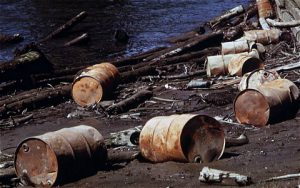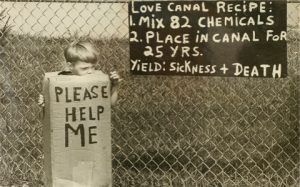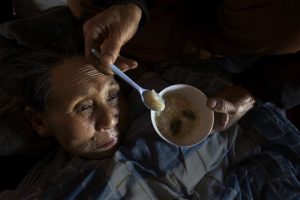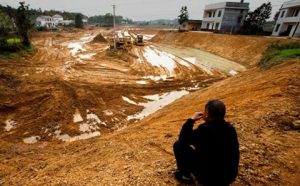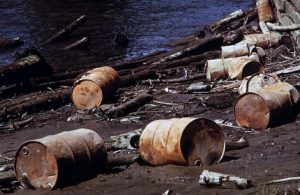In the mid 1980s, doctors and nurses in New York City’s paediatric cancer wards noticed that an unusual number of their patients hailed from the same suburban town near the New Jersey shore.
“Another one from Toms River,” the father of one young patient remembered the oncologist saying. Another mother counted seven Toms River children on the oncology floor one day in 1986, a staggering number for a town then of some 70,000 people.
It didn’t take long before parents connected the untenable number of dead and sick children to the decades of environmental contamination their town endured during its mid-twentieth century industrial heyday.
The difficulty of scientifically linking those two undeniable truths is the subject of US journalist Dan Fagin’s book, Toms River: A Story of Science and Salvation.
The book maps with devastating precision the spread of Toms River’s toxic contamination and the subsequent cancers. Fagin also skillfully navigates the difficult terrain that researchers, residents and public officials covered in seeking to establish a definitive link between the two.
It’s a frustrating and difficult journey, Fagin writes, one often conducted in “the twilight between deeply held belief and demonstrable scientific proof.”
The book is dominated by the spectre of Toms River Chemical, a chemical manufacturing plant for dyes and resins opened in 1952 by the Swiss chemical giant Ciba-Geigy. Brass bands greeted the company on the day they arrived in the sleepy New Jersey town. Toms River was a backwater, and the plant brought much-desired economic growth.
Its crude early waste-disposal methods were not much improved from practices in Switzerland a century earlier. Hazardous waste went straight into unlined pits on the company’s property to be soaked up by the sandy soil, or dumped into the Toms River. By 1965, the company was pumping 5 million gallons of contaminated wastewater into the town’s river every day. The following year, it built a waste pipeline to the ocean.
Toms River Chemical was not the town’s only environmental problem. One of the book’s most unsettling truths is that it doesn’t take a megacorporation to create an environmental crisis.
In 1971, a local hustler named Nick Fernicola convinced two elderly Holocaust survivors to lease him part of their chicken farm for US$40 (250 yuan) per month (a fee he never paid). For four months he used the property as an illegal hazardous waste dump, dropping 5,000 drums of toxic waste from nearby factories for a cut of the profits. An inspector visiting the following year saw his rubber boots disintegrate as he walked across the grounds. The poisons from the illegal dump at Reich Farm spread through the soil and into the groundwater, contaminating local wells for at least 16 years.
The period of Toms River’s poisoning and its citizens’ shift from acquiescence to outrage coincides with the birth of the modern environmental movement in the US. The founding of Greenpeace, public outrage over contamination at Love Canal and the birth of the US Environmental Protection Agency and its superfund cleanup program are all part of the backdrop.
In June 1986, when Ciba-Geigy announced that it was pulling out of Toms River after 34 years, 3 billion pounds of dye, 40 billion gallons of wastewater and 200,000 drums of toxic waste, it found itself in a very different regulatory landscape than the one in which it opened. The limits of public agencies’ power to definitively link polluters and environmental health – both in the 1970s and today – is one of the book’s most eye-opening elements.
There’s no triumphant cinematic ending to the Toms River story. After a long legal battle led by victims’ families, the only agreement reached was that a single pollutant in the town’s drinking water was responsible for increased leukaemia in girls under five.
It was a narrow ruling, but an important one. Toms River is one of only two places in the US where science has positively identified a non-occupational cancer cluster.
“Clusters of rare cancers like the one in Toms River may actually be much more common than we can discern with the crude statistical tools of small-number epidemiology,” Fagin writes. “In other words, many more pollution-induced cancer clusters may be out there, but we don’t see them and we rarely even bother to look.”
Toxins shift to China
The last dye chemicals at the New Jersey plant were produced in 1988, the last resins in 1990. The story, however, does not end there. Production moved across the ocean to places as eager to industrialise and as willing to overlook environmental concerns as Toms River had once been – places like Poland, India and China.
Near the end of the book Fagin visits Chongqing Children’s Hospital, where children of factory workers in the country’s industrial heartland lie sick with leukaemia and many of the other cancers that robbed Toms River’s kids of their youth. He quotes molecular epidemiologist Frederica Perera, who says that though she has worked all over the world, toxic exposures in China are the highest she’s ever seen.
When Toms River Chemical shut down in 1996, Fagin notes, the US and Europe each produced eight times as much plastic as China. In 2010, China produced almost as much plastic as the US and Europe combined. The global metastasis of industrial pollution lingers over the book’s final chapters. (Chinese language rights to the book have been sold, Fagin said, and it could be published in Chinese this year.)
There’s one final twist: Fagin notes that five-year survival rates for the most common childhood leukaemia now reach 90%, thanks to a drug called Gleevec. It is manufactured by Novartis – a company that used to be called Ciba-Geigy, back when it owned the Toms River plant.
